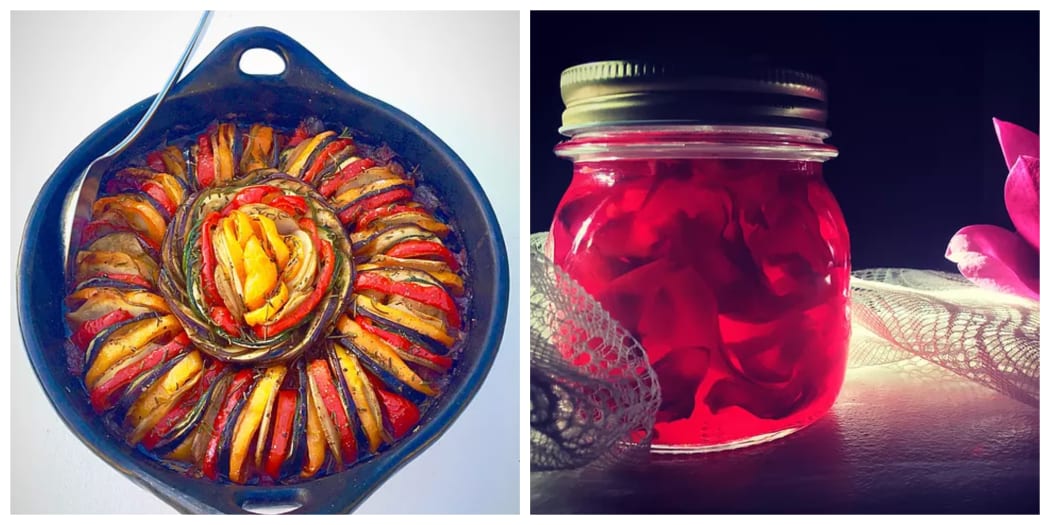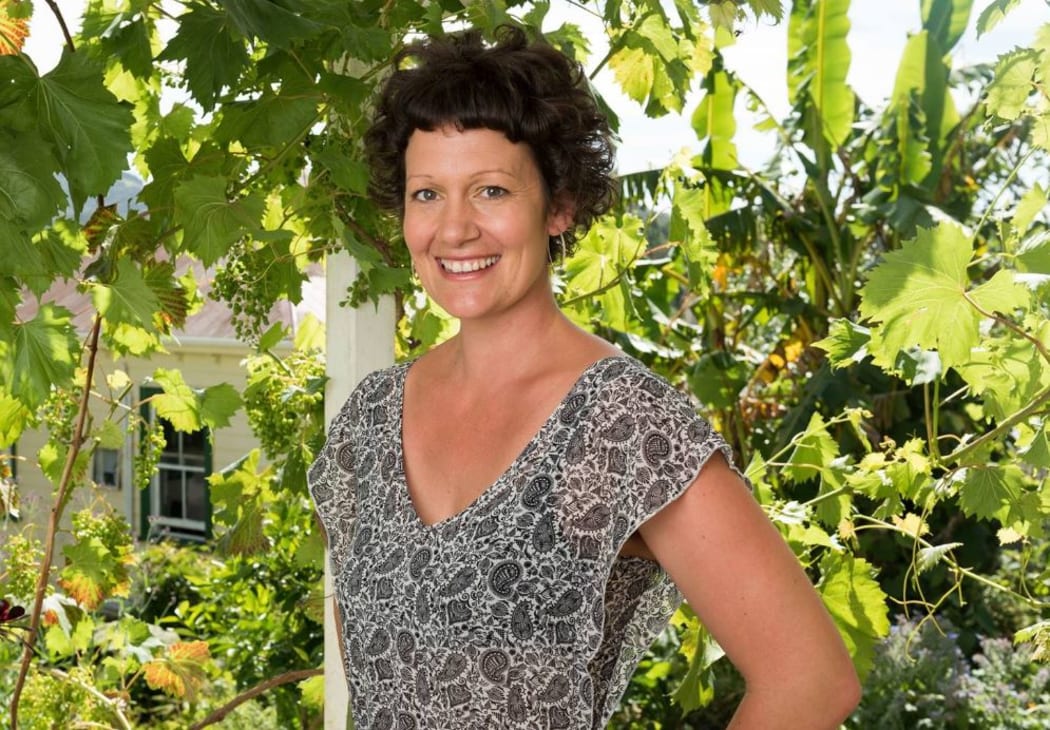From creating ‘The Original Kumara Chips’ to running her own cook school, Northland’s Anna Valentine gives tips on how to get more plant-based food onto your plate this summer.

Anna Valentine Ratouille and Pickled Magnolia Photo: Anna Valentine
Valentine, a vegetarian since 12, trained as a chef and after spending a decade working in restaurants and cafes started a kūmara chip business.
She told Nine to Noon being a vegetable lover she wanted to showcase produce that was grown in the far north and kūmara is what she chose.
Valentine says she had a lot of kūmara to use up and started up a business selling ‘The Original Kumara Chips’ at the Kerikeri markets.
However, after a couple of years when the demand was too big she says she had to sell her business.
She then focused on opening her own cook school in 2016 – The Veggie Tree Cook School.
“Because we had two small young children we weren’t able to get into the shops and be the marketing people that we needed to be for the business, so we decided that we’d sell that on.”
She says she decided to do the cook school and create cook books around family life instead so that she could be there for her children as well.

Anna Valentine spent a decade working in restaurants and cafes before starting hew own business. Photo: Supplied
The inspiration for her cook books and cooking classes came from travelling around the world.
Her cooking classes range from teaching Indian, Japanese and Mediterranean food to bread, sweets and pastries.
Along with her cooking classes, Ms Valentine has just finished whipping up a cookbook, called The Veggie Tree Spring & Summer Cookbook, which has tips on how to get more plants onto your plate.
Here are a couple tips for this summer:
- Use what is fresh and what inspires you.
- Minimal is good, get all the colours in there.
- Adding a rainbow of produce to your diet helps you get all the nutritional benefits.
- Use a lot of herbs and spices.
- Use edible flowers in your cooking, they have high nutritional content in them.
She also has some tips on how to get kids to eat their salads and vegetables:
- Grow and harvest veggies yourself.
- Be a role model and eat the veggies in front of them.
- Give the veggies to your kids raw while cooking and then add protein at dinner (a lot of kids prefer it that way).
- Get kids involved at dinner time.
Valentine also shared a ratatouille recipe from her book that she said helps use up tomatoes, courgettes and capsicums which are currently in season:
Ratatouille
Vegan | Gluten-free
Serves 6-8
1 red onion, diced
1 stick celery, diced
2 cloves garlic, sliced
In a large pan heat:
1/4 c extra virgin olive oil
Add the prepared onion, celery and garlic and fry for three minutes, then stir in:
2 Tbsp balsamic vinegar
pinch of sugar
700g tomatoes, skins removed (grated, Passata or canned)
200ml water
1 stalk rosemary,
leaves roughly chopped
1 Tbsp dried oregano
1/4 c olives, pitted
1 x 400g can butter beans, drained
Simmer gently for 20 minutes. Meanwhile cut the following vegetables into 3mm slices:
1 aubergine (if it's a large aubergine cut in half lengthways)
1 red capsicum, de-seeded
and chopped into three pieces lengthways along natural lines before slicing
1 orange capsicum, de-seeded and chopped into three pieces lengthways along natural lines before slicing
1 zucchini
1 potato or kūmara
When the sauce in the pan has thickened remove from the heat and season with:
3 sprigs fresh basil, roughly chopped
1 tsp salt
1/4 tsp cracked black pepper
Stir through and pour into an ovenproof dish drizzled with olive oil. Preheat oven to 180°C.
Starting from the outside arrange the sliced vegetables on the top, so they stand upright but lean against each other. Top with:
2 T extra virgin olive oil
1 T rosemary, chopped
Cover and bake for one hour and 50 minutes. This dish doesn't need much to accompany it, maybe a leafy salad and some fresh bread for dipping into the sauce.
Another recipe from Ms Valentine’s book that uses edible flowers:
Pickled magnolia flowers
Great as an alternative to pickled ginger for sushi or as a condiment for burgers, sandwiches, grissini or in a salad; pickled magnolia flowers are a spring time delight. You will need to sterilise a 300 ml jar in the oven at 150°C, leave it in the oven to keep warm while you make the recipe.
Gather:
4 c (lightly packed) magnolia petals
Bring a pot of water to the boil and blanch the petals for 30 seconds. Drain through a colander and cool quickly under a cold running tap. Gently squeeze out the excess water.
Add the following ingredients into a pot:
1 c apple cider vinegar
1/2 c unrefined cane sugar
1 tsp salt
2cm piece fresh ginger, sliced thinly (optional)
Bring to the boil then simmer until the sugar and salt are dissolved. Place the leaves into the warm jar and top with the hot pickling liquid and seal with the lid. Sealed this pickle will last for a long time, once opened store in the fridge.
Warning: Magnolia Flowers are unsafe to consume while you are pregnant.

